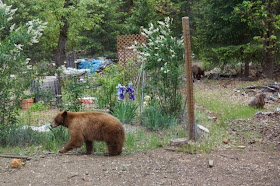1.
I decided to use Ambleside Online this year and we've just finished our first term. I made a few substitutions and modifications, but I tried to stay as close to the proscribed plan as possible. It has been a great choice, and I'm really glad we're doing it. It has made my yearly and weekly planning so so so much easier, and our educational journey is stronger for it. I really want to write a post about our substitutions, and what we've done to make the curriculum more Catholic.
2.
I've also implemented a version of Celeste's naptime school (I got to meet Celeste and her children a couple weeks back - what a lovely experience and conversation! She's the first CM homeschooler I've ever met in person, and the first non-family blogger. It was so nice to be with someone who gets what I do!). I've broken up our morning time into several pieces to make it easier with the littles. I'd like to say that there are no more time outs during morning prayer, but alas that is not the case. But still, a fantastic change for our family. Emma stays in with me in the morning and I work with her while the boys go out and play. I think a longer post about what exactly this looks like - naptime school with a bigger range of ages - would be a good thing.
3.
Another new thing for this year - Sabbath Schooling. We are doing formal lessons for six weeks, then taking a week off. That rest week (this week is one of them) is fantastic. "Rest" is a bit of a misnomer though, as these weeks are very full too - but full of different sorts of activities. On Monday we had term exams and Atrium, then went to Costco (I go every seven weeks, as it is over an hour away), getting home at 9:30. I've also canned 10 quarts of applesauce, 8 cups of apple butter, cleaned and reorganized part of the pantry, did a huge stuff dump onto paper, planned and prepped for Monday's co-op meeting, set up all the Term 2 work for next week, installed a 47 tile Flor rug in our family room, and... well, there's probably more, but that's the stuff I can remember right now. Of course there's the laundry and the meals and the dishes. Phew. It is nice to see it written out because I've been feeling like I haven't gotten all that much done this week. It is easy for me to focus on what I still need to do this week!
4.
And another new thing - Mystie's interval planning. Absolutely brilliant, and it goes along with the six weeks on, one week off thing so well. [edited - I at first said 6 on, 6 off, which contradicts the 3rd point and is incorrect - we're doing 6 on, 1 off]
5.
Ever since I read Jennifer Fulwiler's Family First Creative (her free ebook for pre-ordering her wonderful book) I've been wondering what my creative endeavor is - what fuels me? And really, I don't know. I finished that book feeling like there were a lot of great suggestions, but it made me realize that I can't quite even answer the question that it begins with - namely, what is it I even want to do? And if I'm generally content managing my home and homeschooling and all that entails and trying to do a good job of it, am I somehow selling myself short? Do I need to be doing something more? Should I be? Do I have a responsibility to do more than this?
6.
Awhile back I had a post about how I was breaking up my reading into categories and how wonderful that all was. Well, I still think it is wonderful, but when I started also trying to read all my books as well as pre-read for Ambleside's Y3 and keep up with Y7 as well, everything just fell apart. There are no where near enough hours in the day available for reading that I could keep up with a list like that. Now I'm trying to find space to read three books of my own- something having to do with education, something faith based, and a general non-fiction book. Right now those three books are Consider This, by Karen Glass, The Four Signs of a Dynamic Catholic by Matthew Kelly, and well, I just finished the The Power of Habit by Charles Duhigg and haven't figured out what my next non-fiction read will be.
7.
I wrote recently about a little hike we did as a family, and I've also been wanting to write about a day trip we took about a month ago. Can you guess where we went?
As you can tell, the weather wasn't all that great, so we didn't get to see the Blue Angels fly much, but we still had a wonderful day. We visited the Golden Gate Bridge, watched the ships sail into the Bay, walked down to Crissy Field, walked through the Palace of Fine Arts and then back up through the Presidio. We walked over nine miles! Justin, our three year old, was in a stroller most of the time, but even Nathan (6), who is not the most willing of walkers, persevered and did it. It was a long day, but a wonderful excursion. I'm hoping to do day trips to SF every few months, now that we've shown we can do it.





































